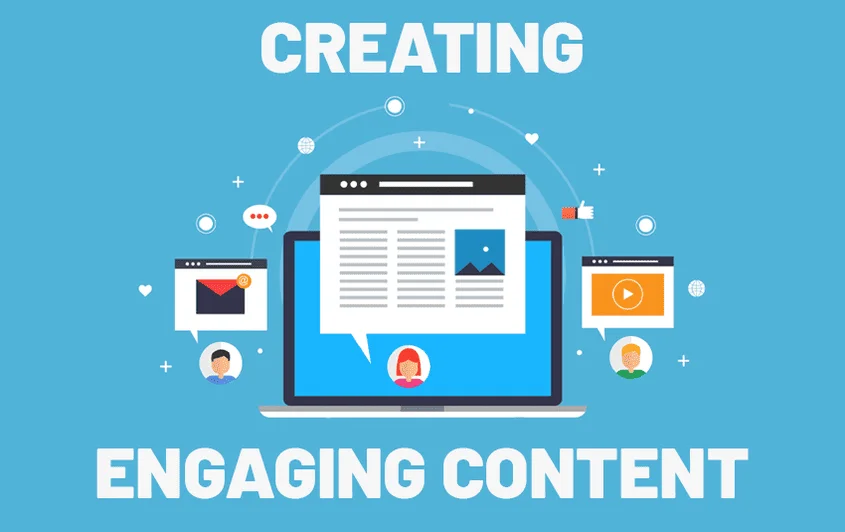In today’s digital world, video content is more important than ever. People are consuming videos on social media platforms like never before, making it one of the best ways to connect with an audience. Whether you’re an individual content creator or a business owner, creating engaging videos for social media can help you build your brand, attract more followers, and even boost sales. But how can you make sure your videos stand out and capture the attention of your audience? In this blog, we’ll explore some key tips on how to create engaging video content that resonates with viewers.
Table of Contents
1. Know Your Audience
The first and most important step in creating engaging video content is knowing your audience. Who are you trying to reach? What do they like? What kind of content do they engage with?
Understanding your audience helps you tailor your videos to their interests. For example, if your target audience is teenagers, you might want to create content that’s fun, trendy, and fast-paced. If you’re targeting professionals, your videos might need to be more informative and polished.
To know your audience better, you can:
- Check your social media analytics to see who’s watching your content
- Conduct surveys or ask for feedback directly from your followers
- Analyze the type of content your competitors or similar influencers are posting
Once you understand your audience’s preferences, you can create content that appeals to them, making your videos more likely to engage and resonate with them.

2. Create a Hook in the First Few Seconds
The average attention span on social media is short. If your video doesn’t grab attention in the first few seconds, you risk losing viewers.
Start your videos with a strong hook to make sure your audience keeps watching. The hook could be:
- A surprising fact or statistic
- A bold statement or question that piques curiosity
- A visually appealing image or fast-paced montage
For example, if you’re making a video about fitness, you could start by asking, “Do you want to get in shape in just 10 minutes a day?” or show a quick clip of a powerful workout routine. A hook like this grabs attention and encourages people to watch the rest of your video.
3. Keep It Short and Sweet
When it comes to social media, shorter videos tend to perform better. People often browse their feeds in a hurry, so they don’t have time for long-winded videos. Keeping your videos short and to the point can help you hold your audience’s attention.
The optimal length for social media videos varies depending on the platform:
- Instagram Reels: 15–60 seconds
- TikTok: 15–60 seconds
- YouTube Shorts: 15–60 seconds
- Facebook: 1–2 minutes
- Instagram Stories: Up to 15 seconds per story
Focus on delivering your message concisely and clearly. If you have a lot to say, consider breaking your content into shorter segments or episodes that keep viewers coming back for more.
4. Storytelling Is Key
One of the best ways to make your videos engaging is to tell a story. People are naturally drawn to stories, and they’re more likely to watch and share videos that have a compelling narrative.
Even if you’re creating a short video, try to structure it with a beginning, middle, and end:
- Beginning: Introduce the main idea or problem
- Middle: Show how the problem is being solved or the story is progressing
- End: Provide a solution, conclusion, or call-to-action
For instance, if you’re creating a video for a product, you could start by showing a common problem people face, then demonstrate how your product solves it, and end by encouraging viewers to try it themselves.
5. Incorporate Captions and Subtitles
Many people watch social media videos with the sound off, especially when they’re scrolling through their feeds in public places. That’s why it’s important to add captions or subtitles to your videos.
Captions make your videos accessible to a wider audience, including those with hearing impairments or people who don’t speak your language fluently. They also help retain viewers who might otherwise scroll past because they can’t listen to the audio.
You can easily add captions using built-in tools on platforms like YouTube, Instagram, or third-party apps like Rev or CapCut.
6. Use High-Quality Visuals and Audio
Even if you’re creating videos on a budget, the quality of your visuals and audio matters. No one wants to watch a blurry or poorly lit video with scratchy sound.
Here are a few simple tips to improve the quality of your videos:
- Lighting: Try to film in natural light or use a ring light to brighten up your shots
- Sound: Use a microphone if possible, or film in a quiet place to avoid background noise
- Camera: If you’re filming on a smartphone, make sure to use the rear camera for better quality
After filming, use editing tools to polish your video. Even basic apps like InShot or iMovie can help you trim clips, adjust colors, and add music or effects.

7. Leverage Trends and Challenges
On platforms like TikTok and Instagram, trends and challenges are constantly popping up. These trends are a great opportunity to get your content noticed, as they often come with built-in audiences looking for similar videos.
To take advantage of trends:
- Keep an eye on what’s popular by following hashtags, creators, or explore pages
- Adapt trends to fit your brand or message without losing authenticity
- Put your own spin on challenges to make your content stand out from the crowd
For example, if there’s a trending dance challenge, you could incorporate it into your video in a fun way that still ties into your overall content theme.
8. Include a Call-to-Action (CTA)
A call-to-action (CTA) encourages your audience to take the next step after watching your video. This could be anything from liking or sharing your video to visiting your website or making a purchase.
Some effective CTAs include:
- “Follow us for more tips!”
- “Share this video with a friend!”
- “Click the link in our bio to learn more!”
Make sure your CTA is clear and fits naturally into your content. You don’t want to come across as overly salesy or pushy.
9. Optimize for Different Platforms
Every social media platform has its own set of rules, and what works on one platform might not work on another. For example, videos on TikTok are usually short and vertical, while videos on YouTube can be longer and in a wider format.
Here are a few things to keep in mind:
- Instagram and TikTok: Focus on vertical videos that are short and fast-paced
- YouTube: Longer videos work well, but keep them informative or entertaining
- Facebook: Mix of shorter and longer videos, but make sure the thumbnail and title grab attention
By optimizing your content for each platform, you increase the chances of your videos being shared and engaged with.
10. Analyze and Improve Performance
After posting your videos, keep an eye on how they’re performing. Most social media platforms offer analytics that show how many people watched your video, how long they watched it for, and how many people engaged with it.
Use this data to:
- See what’s working and what’s not
- Adjust your content based on audience feedback
- Experiment with different video lengths, formats, or styles
Improving your videos over time will help you keep your audience engaged and attract new viewers.
Conclusion
Creating engaging video content for social media doesn’t have to be complicated. By understanding your audience, crafting a compelling story, and keeping things short and to the point, you can create videos that grab attention and keep viewers coming back for more. Remember to always stay authentic, follow trends when they fit your brand, and optimize your content for the platforms you’re using. With the right strategy, video content can become a powerful tool for growing your social media presence.

Jessica Muller is an accomplished writer at Water Beads Design, holding a Bachelor’s degree in Fine Arts with a focus on Design and Visual Communication. Her expertise in water bead artistry is backed by over 5 years of experience in the field, where she has developed a deep understanding of artistic techniques and design trends. Jessica’s writing reflects her extensive knowledge and creative approach to water bead design. For professional tips and innovative ideas, follow Jessica on Instagram.





